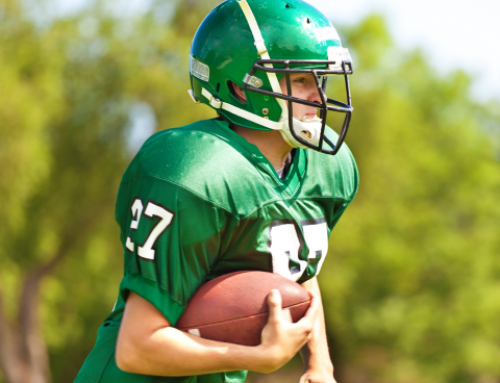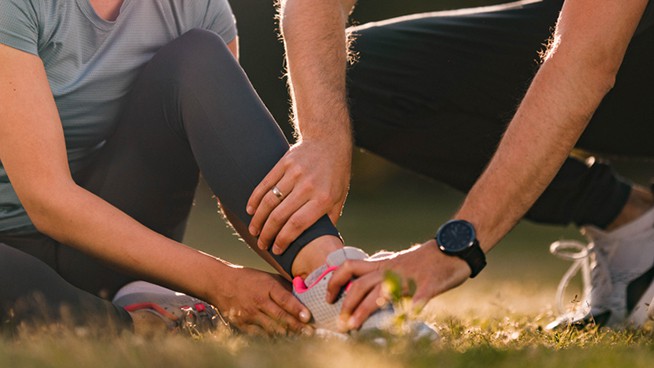Mariano Rivera and the Challenges Facing a Pitcher Returning From an ACL Tear
One of baseball’s best closers, Mariano Rivera is facing the biggest challenge of his career as he recovers from a right ACL tear sustained during warmups before his May 3, 2012 game. ACL surgery is tough for any athlete, but especially for the 42-year old Rivera, one of the oldest players in professional sports. Coming back from any injury later in a career is difficult, but the long recovery after this procedure is particularly hard. (Want more information? See The Athlete’s Guide to the ACL.)
Previously we looked at Marcus Lattimore, who is still in the recovery phase, and Adrian Peterson, who is back dominating the NFL soon after his injury. But they’re both ten to twenty years younger than Rivera. The Yankee closer probably would have retired after last season had he not suffered the ACL tear; but in an interview with the New York Daily News, he stated, “I didn’t want to go out like that.” Rivera’s dedication gives us a great opportunity to review the uniqueness of returning to the big leagues at the age of 42, as well as why it’s different for a baseball pitcher than for a football or basketball athlete.
Why does age make returning after an ACL injury more challenging?
Regardless of age, a successful surgery is the first precursor for an athlete returning. If it’s performed without complications, then rehabilitation can begin almost immediately, with an early focus on restoring range of motion, diminishing pain and alleviating swelling. The next phases involve rebuilding muscular strength, regaining functional mobility and practicing sport-specific movements. Once the injured/repaired limb is 85 to 100% as strong as it was prior to the injury, an athlete can generally return.
However, the recovery process is not as simple as this outline suggests. It’s a hard and frustrating time. And it’s a bigger struggle for older athletes, whose bodies do not recover as quickly as their younger competitors. Motivation is key, but it’s often a major hurdle for veteran athletes, who have already proven themselves and secured their financial future. But Rivera is a special breed of person. He’s been an elite player throughout his career, and he wants to bring his team back to the winner’s circle.
Still, there’s no off-season for an athlete returning from a major injury. The pressure and effort to return begins immediately and doesn’t stop until the goal is achieved. Even then, the athlete has to deal with critics analyzing his every move, judging whether he is fit to play. Each athlete, regardless of age, must find what will drive him or her to get back on the field. It takes a lot of mental fortitude and confidence. There is a significant psychology to the return of an athlete to high-level competition. I’m a firm believer that strength and preparedness must come together to restore an athlete’s confidence prior to his or her return to play.
Is it harder for a pitcher’s to return after ACL surgery?
Baseball is a unique sport, and pitching is different from other positions on the diamond. A pitcher’s arm is what makes him or her successful; and someone with a reconstructed ACL will not recover arm strength or pitching velocity if his or her lower-body strength, core stability and rotational power are not restored.
Rivera’s first concern was to regain mobility and power in his injured right knee. His left leg strength needed to be maintained with single-leg training. What might have been expected to lag behind is his rotational power. Leg extensions and twisting put a great deal of strain on the ACL, so rotational exercises cannot be trained until later in the rehab process. Rivera won’t be able to throw or long toss off the mound for up to three months, at least until he gains sufficient strength and stability. Early on after an ACL tear, the graft must be protected, especially when not bearing weight. Hip stretching and mobility exercises, essential for pitchers, must be limited, because they can put the knee in dangerous positions.
Rivera is known for his famed cutter pitch, which needs strict control and rotational power. For him to return to his former high level of performance, the following elements need to be restored:
- Functional strength: Trap Bar Deadlift and Back Squat to protect the shoulder.
- Hip mobility: hip flexors, adductors and rotators. (See the series on Strong and Mobile Hips: Part 1, Introduction; Part 2, Hip Flexibility; and Part 3, Hip Strength.)
- Core strength: anti-rotation and anti-flexion exercises (See Improve Your Hitting and Throwing Power With Baseball-Specific Core Exercises.)
- Upper-body flexibility, rotator cuff stability, and soft tissue quality: This is best done with manual treatments versus typical exercises. Normally, throwing helps maintain range of motion; but when an athlete is unable to throw, the therapist’s hands are the best alternative. (See STACK’s series on How to Keep Your Shoulders Healthy: Part 1, Mid-Back Mobility; Part 2, Shoulder Stability; and Part 3, Rotator Cuff Strength.)
- Rotational power: Try medicine ball plyometric throws once healed enough to perform.
- Single-leg strength: Pitching is a transitional movement, from the stance leg to the landing leg; and both need to be strong in order to be effective. (Why Single-Leg Training Should Be in Your Program.)
RECOMMENDED FOR YOU
MOST POPULAR
Mariano Rivera and the Challenges Facing a Pitcher Returning From an ACL Tear
One of baseball’s best closers, Mariano Rivera is facing the biggest challenge of his career as he recovers from a right ACL tear sustained during warmups before his May 3, 2012 game. ACL surgery is tough for any athlete, but especially for the 42-year old Rivera, one of the oldest players in professional sports. Coming back from any injury later in a career is difficult, but the long recovery after this procedure is particularly hard. (Want more information? See The Athlete’s Guide to the ACL.)
Previously we looked at Marcus Lattimore, who is still in the recovery phase, and Adrian Peterson, who is back dominating the NFL soon after his injury. But they’re both ten to twenty years younger than Rivera. The Yankee closer probably would have retired after last season had he not suffered the ACL tear; but in an interview with the New York Daily News, he stated, “I didn’t want to go out like that.” Rivera’s dedication gives us a great opportunity to review the uniqueness of returning to the big leagues at the age of 42, as well as why it’s different for a baseball pitcher than for a football or basketball athlete.
Why does age make returning after an ACL injury more challenging?
Regardless of age, a successful surgery is the first precursor for an athlete returning. If it’s performed without complications, then rehabilitation can begin almost immediately, with an early focus on restoring range of motion, diminishing pain and alleviating swelling. The next phases involve rebuilding muscular strength, regaining functional mobility and practicing sport-specific movements. Once the injured/repaired limb is 85 to 100% as strong as it was prior to the injury, an athlete can generally return.
However, the recovery process is not as simple as this outline suggests. It’s a hard and frustrating time. And it’s a bigger struggle for older athletes, whose bodies do not recover as quickly as their younger competitors. Motivation is key, but it’s often a major hurdle for veteran athletes, who have already proven themselves and secured their financial future. But Rivera is a special breed of person. He’s been an elite player throughout his career, and he wants to bring his team back to the winner’s circle.
Still, there’s no off-season for an athlete returning from a major injury. The pressure and effort to return begins immediately and doesn’t stop until the goal is achieved. Even then, the athlete has to deal with critics analyzing his every move, judging whether he is fit to play. Each athlete, regardless of age, must find what will drive him or her to get back on the field. It takes a lot of mental fortitude and confidence. There is a significant psychology to the return of an athlete to high-level competition. I’m a firm believer that strength and preparedness must come together to restore an athlete’s confidence prior to his or her return to play.
Is it harder for a pitcher’s to return after ACL surgery?
Baseball is a unique sport, and pitching is different from other positions on the diamond. A pitcher’s arm is what makes him or her successful; and someone with a reconstructed ACL will not recover arm strength or pitching velocity if his or her lower-body strength, core stability and rotational power are not restored.
Rivera’s first concern was to regain mobility and power in his injured right knee. His left leg strength needed to be maintained with single-leg training. What might have been expected to lag behind is his rotational power. Leg extensions and twisting put a great deal of strain on the ACL, so rotational exercises cannot be trained until later in the rehab process. Rivera won’t be able to throw or long toss off the mound for up to three months, at least until he gains sufficient strength and stability. Early on after an ACL tear, the graft must be protected, especially when not bearing weight. Hip stretching and mobility exercises, essential for pitchers, must be limited, because they can put the knee in dangerous positions.
Rivera is known for his famed cutter pitch, which needs strict control and rotational power. For him to return to his former high level of performance, the following elements need to be restored:
- Functional strength: Trap Bar Deadlift and Back Squat to protect the shoulder.
- Hip mobility: hip flexors, adductors and rotators. (See the series on Strong and Mobile Hips: Part 1, Introduction; Part 2, Hip Flexibility; and Part 3, Hip Strength.)
- Core strength: anti-rotation and anti-flexion exercises (See Improve Your Hitting and Throwing Power With Baseball-Specific Core Exercises.)
- Upper-body flexibility, rotator cuff stability, and soft tissue quality: This is best done with manual treatments versus typical exercises. Normally, throwing helps maintain range of motion; but when an athlete is unable to throw, the therapist’s hands are the best alternative. (See STACK’s series on How to Keep Your Shoulders Healthy: Part 1, Mid-Back Mobility; Part 2, Shoulder Stability; and Part 3, Rotator Cuff Strength.)
- Rotational power: Try medicine ball plyometric throws once healed enough to perform.
- Single-leg strength: Pitching is a transitional movement, from the stance leg to the landing leg; and both need to be strong in order to be effective. (Why Single-Leg Training Should Be in Your Program.)












